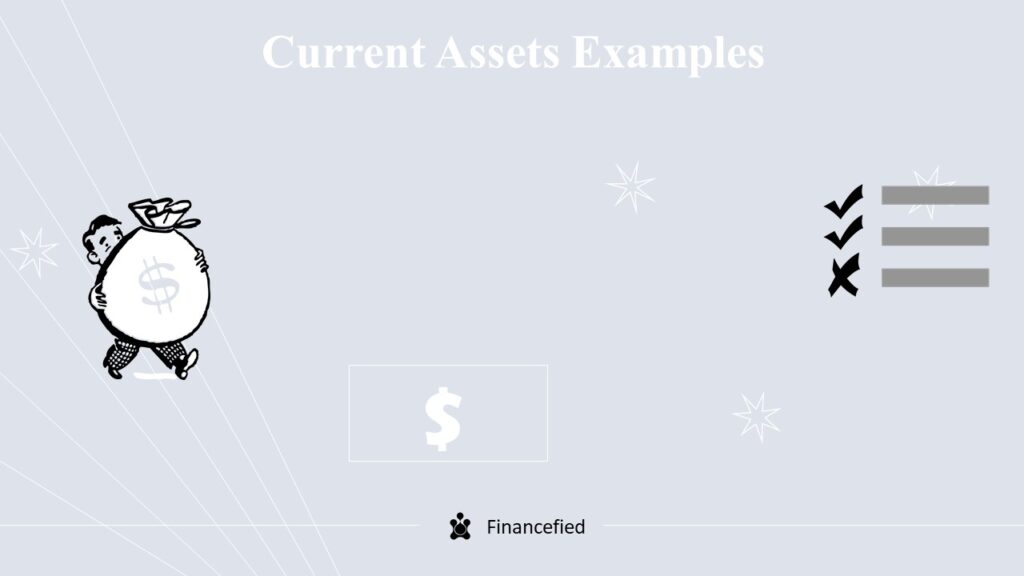Current assets are tied into bundles and converts in the short run. Some are recognized individuals, and others are under categories. The list below compromises core categories of current assets examples.

Current Assets Examples
- Cash at hand
- Cash equivalents
- Inventory
- Receivables
- Non-trade receivables
- Pre-paid expenses
- Short-term investments
- Deferred income tax
1. Cash at hand
Cash in hand is a company’s money in its reserve as notes and coins. This is the most liquid asset that a company can have. It is used to cover the short-term liabilities of a company. Cash at hand ensures the company covers its due obligations as they present themselves.
2. Cash equivalents
These are assets recognized as cash but are not held as notes and coins by a company. Cash equivalents are also liquid and can be used to pay short-term liabilities.
A company will have cash equivalent as money deposited in their bank accounts. Others might have invested in the stock market or bought government bonds. Marketable securities and bonds fall in the category of cash equivalents.
3. Inventory
It is the combination of finished products and raw materials used for production purposes. The finished products are also called stock. Some companies will have only stock on their balance sheet if they are not involved in direct manufacturing.
For instance, a retail store will have finished goods ready to be sold to buyers. Such a retailer will not hold raw materials because it is not their business to manufacture products.
However, other companies will have raw materials and finished goods combined under inventory as current assets. For instance, a detergents manufacturing company will have finished goods ready detergent) and raw materials like colors, perfume, and later forming chemicals.
4. Receivables
This is the unpaid money customers who made credit purchases. These customers are also referred to as debtors. Companies allow credit purchases to trusted customers who will certainly pay.
Proper management of accounts receivables helps a company determine how much money each customer owes a company. It also helps determine when a customer will pay off their debt. This informs the management how its liquidity changes as accounts receivables pay off with time.
5. Non-trade receivables
This is the unpaid company’s money unrelated to a credit purchase. A non-trade receivable does not arise from credit purchase of a product or a service. It occurs as a result of transactions between a company and other parties. Unlike trade receivables, there are no legal rights for a company to be paid its non-trade assets.
6. Pre-paid expenses
This is an expense that a company has paid for in full, waiting for a future date to realize the full benefit of it. For example, a company can prepay its water utility bill. The water utility bill will be recognized as prepaid expenses and recorded under prepaid assets.
When the water paid for is used, it will cease to exist as a prepaid expense and ceases to be recognized as a current asset. At this point, it is deduced from prepaid assets.
7. Short-term investments
It is a bundle of all those investments a company will hold in less than a year. Short-term investments are for diversifying the income streams that a company has. They are considered a stable option because of their lower risks.
They are not affected as much by the high market volatility as long-term investments. Short-term investments are ideal when a company has excess money and does not want to keep this money idling in the cash reserve. Since these investments convert within 12 months, they are more valuable than leaving money idling.
8. Deferred income tax
This is the difference in income tax resulting from the discrepancy of tax recognition by the company’s accounting approaches and tax laws. The word deferred means that tax income paid is yet to be recognized, and its recognition awaits a future date. To a company, this is an overpayment until the taxman recognizes the income tax.
Related Articles
